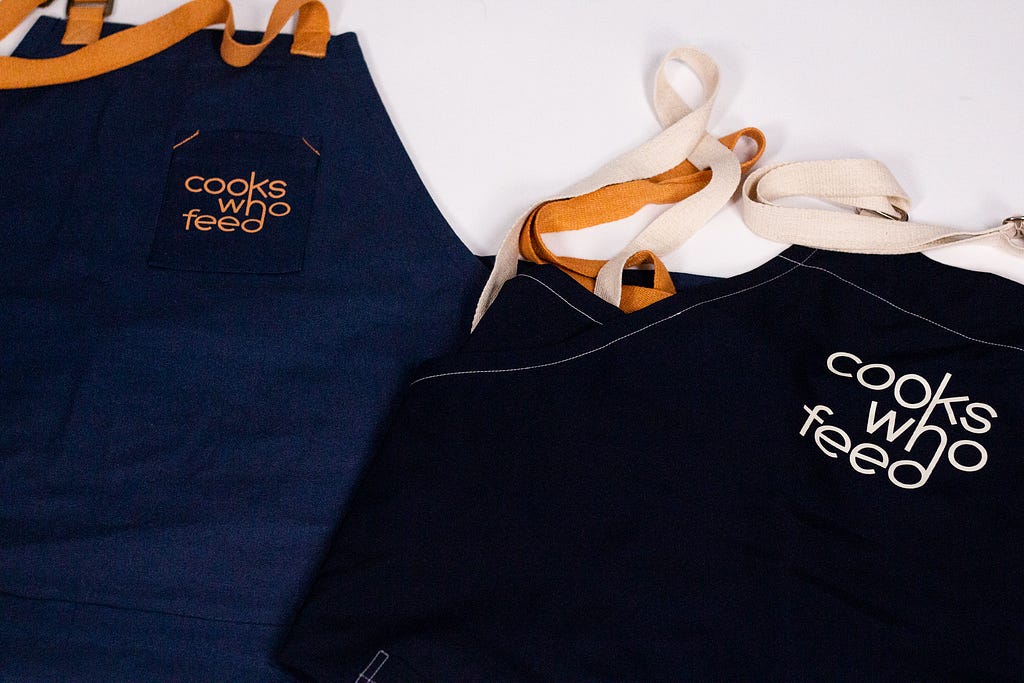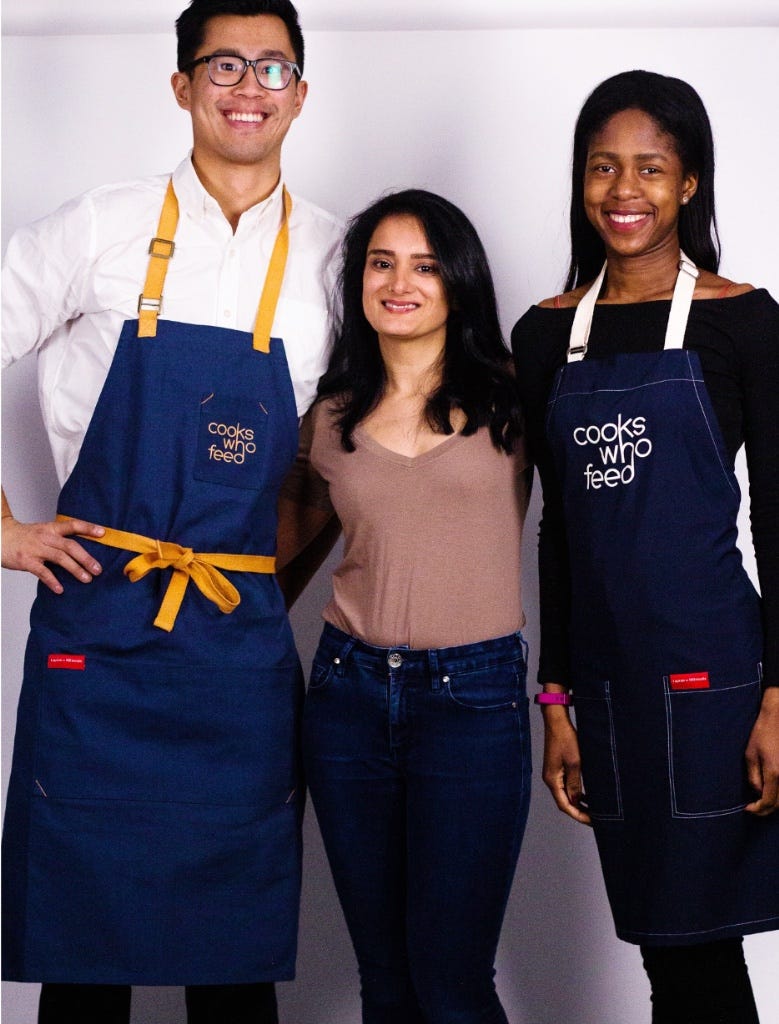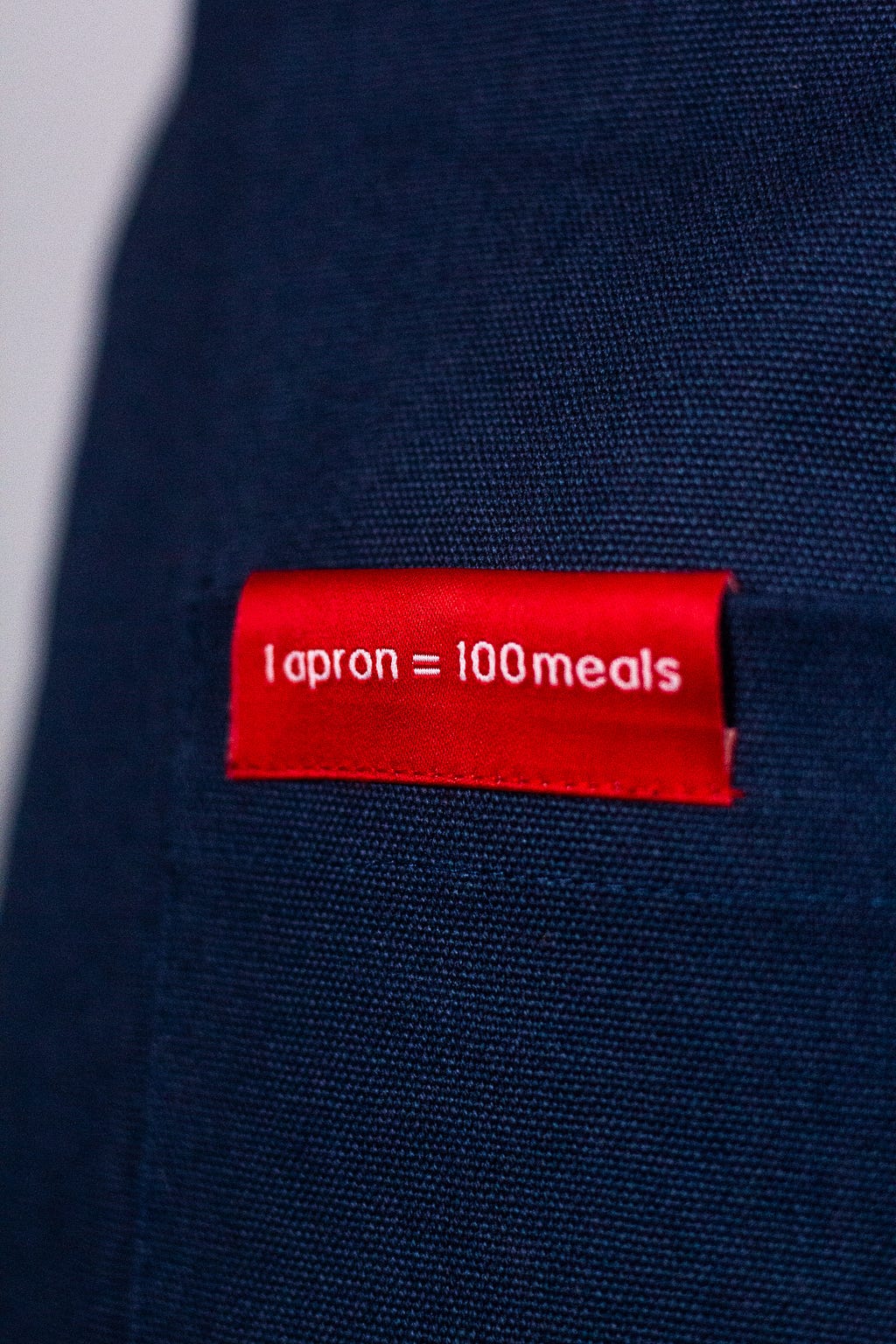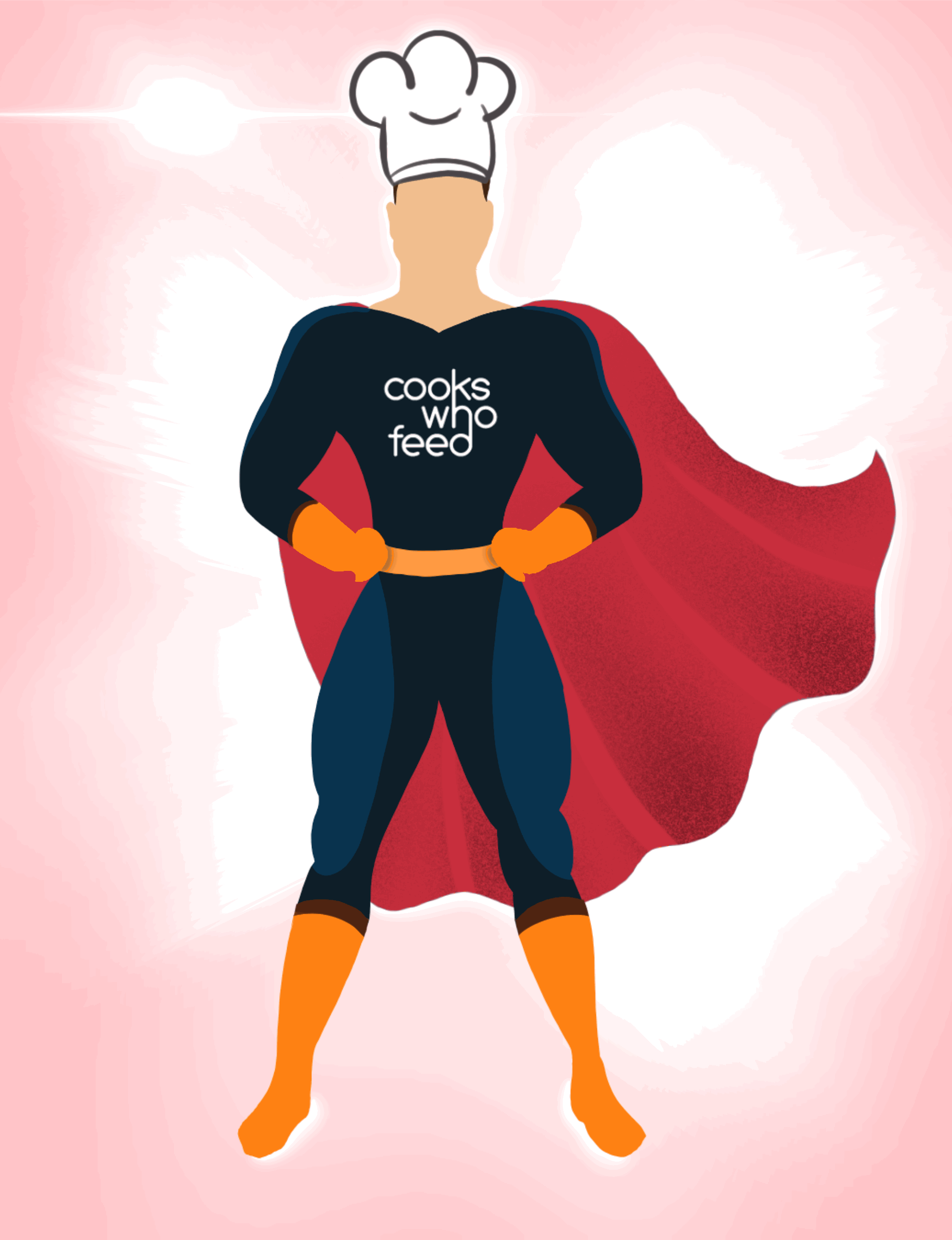Cooks Who Feed Founder Transforms Love for Cooking into Business That Benefits Artisans and Connects with Nonprofits

Food waste is a pressing issue affecting both climate change and world hunger. You know it, I know it, we all know it. So why not do something about it?
Seema Sanghavi, mother of three young children, founded Cooks Who Feed in early 2018 to address this pressing issue. Cooks Who Feed is a social enterprise that actively reduces food waste and feeds the hungry using proceeds from the sale of handmade aprons. Sanghavi was inspired by her love for cooking and experiencing new foods to pass along this pleasure to those less fortunate, one apron at a time.
For every apron sold, Cooks Who Feed provides 100 hungry people with a nutritious meal. To fulfill this promise and ensure that food ends up in the right hands, Sanghavi partnered with reputable charities such as Second Harvest in Canada, Rescuing Leftover Cuisine in the United States, and Feeding India. Being connected to a network of volunteers from these three non-governmental organizations (NGOs) meant that Sanghavi could focus on redirecting food destined for the landfill to those who need it most.

But how is all this actually done in practice? Given that she is a sole proprietor of the company with three young kids to take care of, I can only assume that there is an immense amount of management and operational work involved in getting the business up and running.
Is your business looking for ideas on making a positive environmental impact? Check this free online report from B Lab that compiles articles and resources to help your business become a climate leader. Whether you work at a large company or an agency, get inspired to do more today.
In our interview, she explained that her journey to bring the initiative to life began about three years ago when a friend invited her to visit an NGO she founded in Delhi, India. The NGO provided safe and fair work to marginalized women with the goal of getting them out of poverty. The women were hired from nearby villages and provided with training to become seamstresses.
When Sanghavi met the women for the first time, she felt compelled to help so more women could have the same opportunity. The last thing she wanted was to get back to her life in Canada and forget what she had seen. Today, this is the same NGO Sanghavi works with to produce all her aprons, and she often flies out to the production facility to visit her artisan workers on-site and ensure operations are moving smoothly.
The materials used in her production process are never overlooked. In a world that promotes a zero waste lifestyle, she produces two aprons that follow this trend: one made of canvas and the other using fabric made from recycled plastic. Initially, these aprons were to be sold to retail customers via the company website and at trade shows, but they are now also available as bulk orders to businesses that use the aprons as gifts and to culinary schools.
Catering to these groups, Sanghavi developed two pricing models that allow all individuals to make an impact regardless of their budgets, whether small or large. For aprons sold through retail channels, the giving model is one apron = 100 meals (yes that’s 100 meals). Business clients with smaller budgets can choose a giving model that provides 10 meals for every apron sold — paying less for an apron but still creating impact with volume. The revenue is shared with the three charity organizations she works with that ensure every apron sold feeds the number of people promised. As the company grows, she plans to partner with more organizations in additional countries that share a common mission of rescuing food waste to feed the hungry.


Having created this business model with positive impact as the goal, Sanghavi continues to make many successful changes throughout her journey. The company’s latest shift is moving away from single-use plastic for its packaging. Instead, Cooks Who Feed is reducing its production waste by turning scrap fabric into drawstring bags. Aprons are packed in these bags when shipped to customers, and Sanghavi is now investigating compostable and recycled mailers to replace the standard polyethylene mailer for shipping.
Moreover, she is expanding the product line by collaborating with celebrity chefs to design custom aprons that reflect each chef’s personality and brand. She believes that engaging with the foodie community through such collaborations will help build awareness of Cooks Who Feed and turn the participating chefs into brand ambassadors. This fall, the company will add five aprons to its product line, including three designed with chefs.
For Sanghavi, her strategy is simple: Be socially responsible at every level of the business. This multi-level impact is what makes her business unique; there is a social benefit in every step of our process. By using eco-friendly fabrics, providing work to marginalized women, and redistributing food waste to feed the hungry, Sanghavi is a driving force for good while improving the Cooks Who Feed bottom line.
B the Change gathers and shares the voices from within the movement of people using business as a force for good and the community of Certified B Corporations. The opinions expressed do not necessarily reflect those of the nonprofit B Lab.

Bridging the Gap Between Food Waste and Hunger, One Apron at a Time was originally published in B the Change on Medium, where people are continuing the conversation by highlighting and responding to this story.